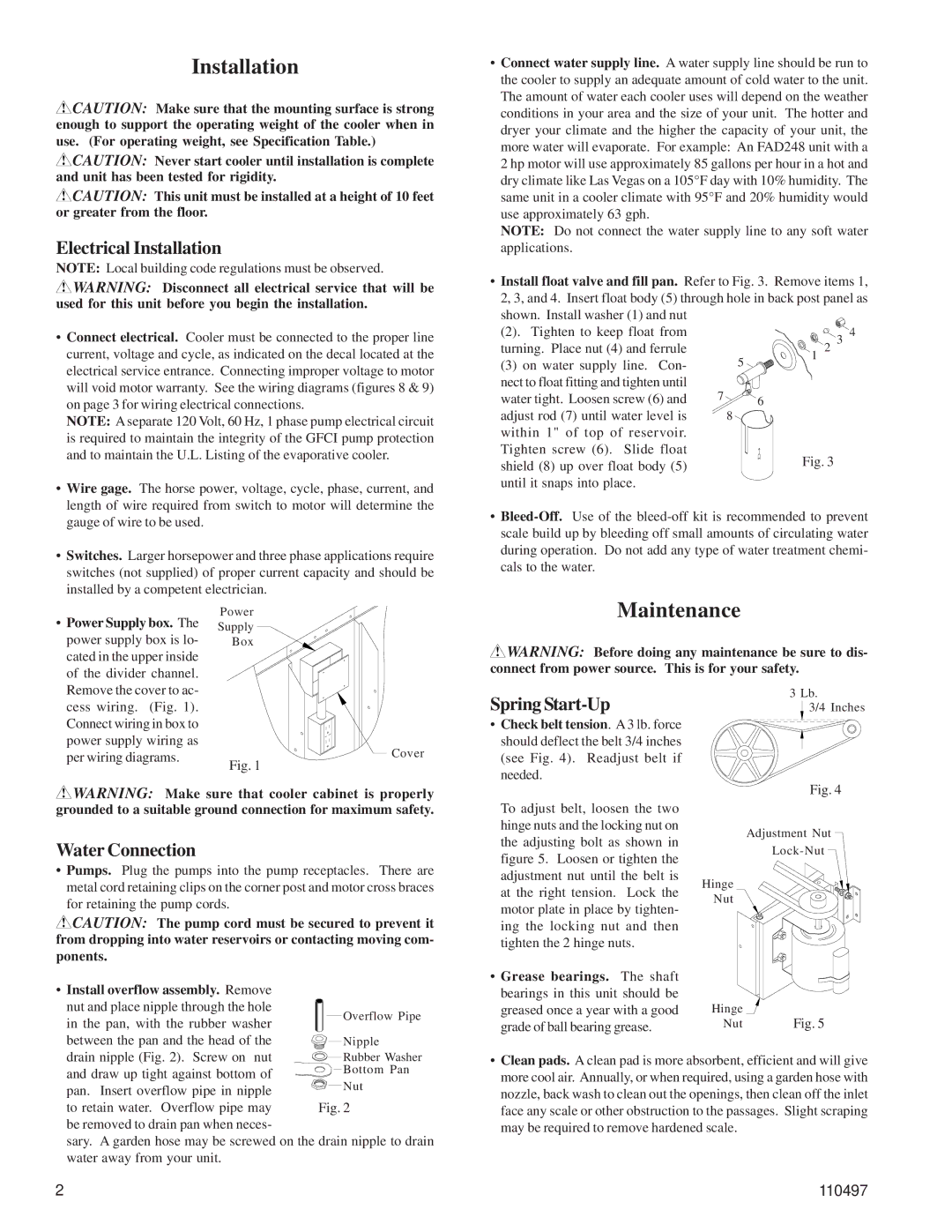FAD242, FAD248 specifications
Essick Air's FAD248 and FAD242 evaporative coolers are engineered to enhance indoor comfort and air quality, making them popular choices for residential and commercial spaces. Both models utilize a natural and energy-efficient cooling process, providing a refreshing respite from heat during the warmer months.The FAD248 model is noted for its significant cooling capacity, making it suitable for medium to large-sized rooms. It features a powerful motor that delivers a high air output, ensuring that even the hottest spaces can maintain a comfortable temperature. On the other hand, the FAD242 is designed for slightly smaller areas, providing ample cooling with a slightly lower output while maintaining energy efficiency.
Both models employ advanced evaporative cooling technology that operates by drawing warm air through water-saturated pads. As the air passes through these pads, moisture evaporates, consequently lowering the air temperature. This process not only cools the air but also adds beneficial humidity, which can alleviate dryness and improve respiratory comfort.
The construction of the FAD248 and FAD242 includes durable, high-quality materials designed to withstand the rigors of continuous use. The exterior housing is typically constructed from robust plastics that are resistant to wear and tear, ensuring longevity. Furthermore, both coolers are equipped with large water reservoirs, allowing for extended periods of operation without the need for constant refilling.
In terms of usability, the FAD248 and FAD242 incorporate user-friendly controls that allow for easy adjustments to fan speed, cooling settings, and oscillation options, providing users with the flexibility to customize their cooling experience. Many models include a remote control feature for added convenience, allowing users to operate the unit from a distance.
Energy efficiency is a key highlight of both the FAD248 and FAD242, designed with efficiency in mind to minimize electricity consumption. This means users can enjoy cooler indoor environments without incurring high energy costs, making these coolers an environmentally friendly choice.
In summary, the Essick Air FAD248 and FAD242 evaporative coolers are practical solutions for effective and energy-efficient cooling. With user-centered designs, durable construction, and advanced evaporative technologies, they contribute significantly to enhanced indoor air quality and comfort, catering to the needs of different room sizes while promoting an eco-friendly lifestyle.

